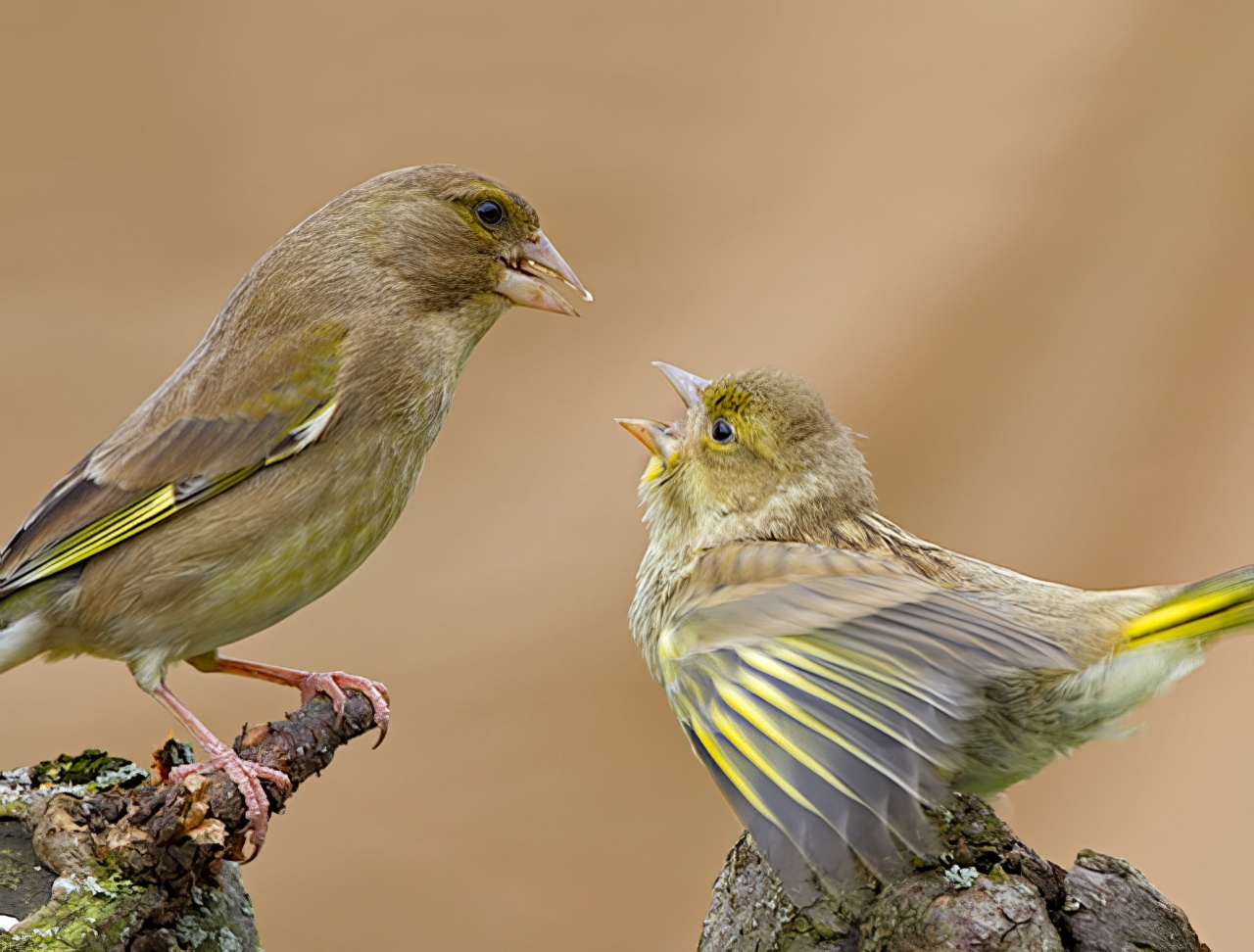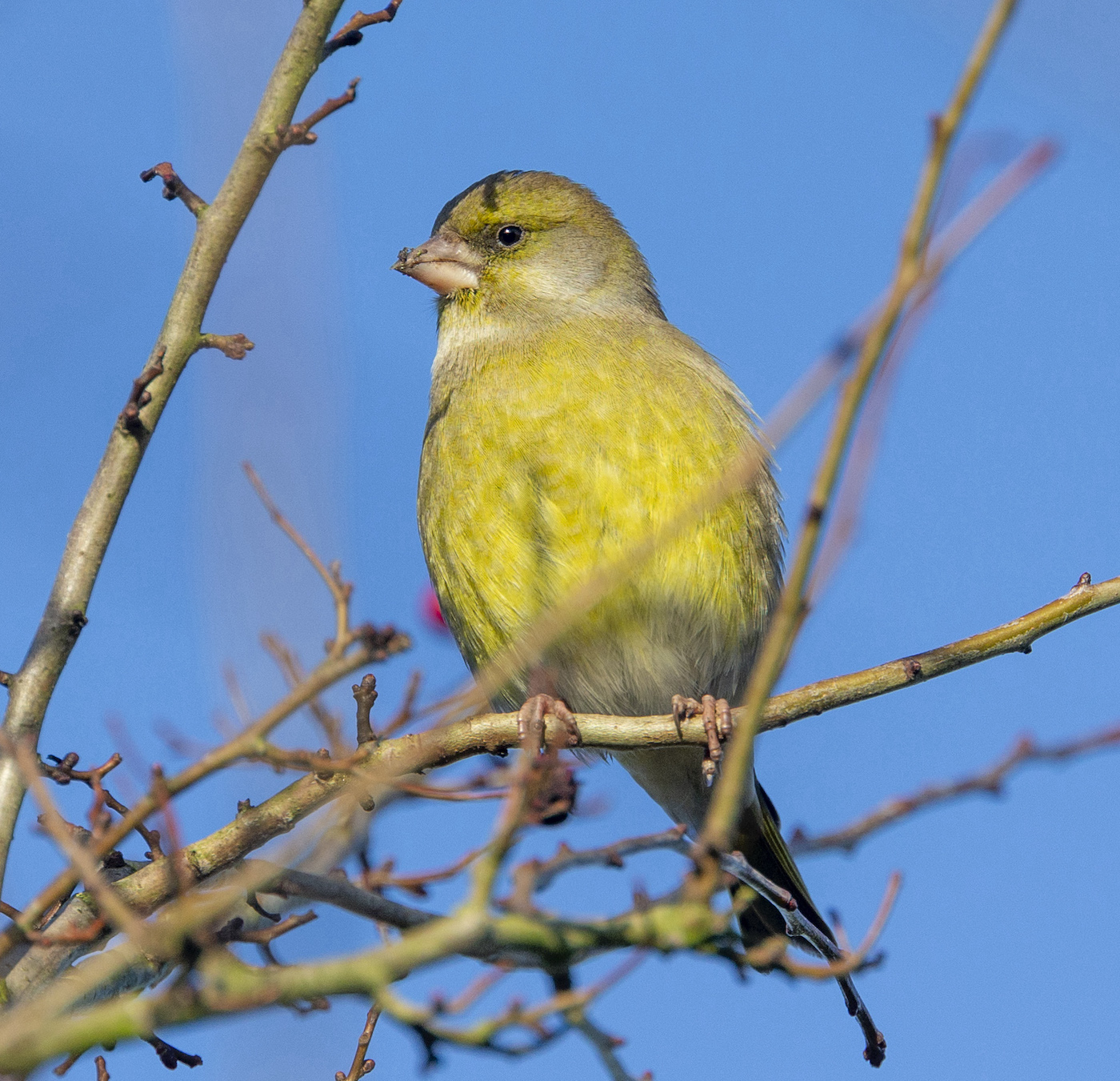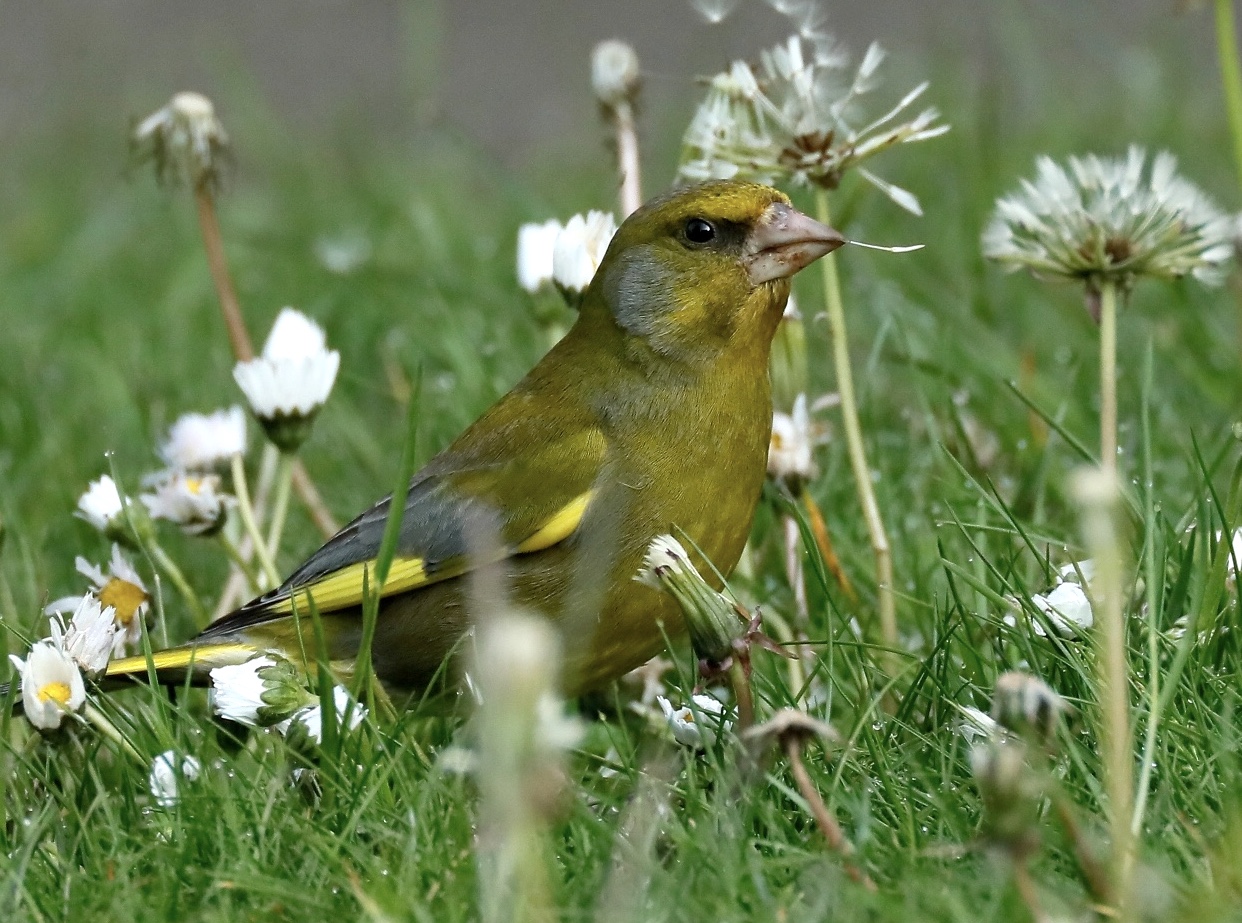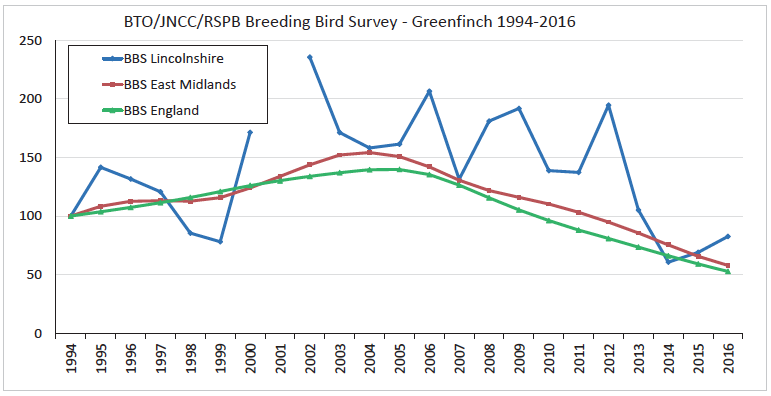Greenfinch Chloris chloris
British form harrisoni a common but declining resident, passage migrant and winter visitor. Nominate continental form a winter visitor in unknown numbers. Red List (harrisoni) and Green List (nominate).



Greenfinch numbers have fallen as a result of the protozoan parasite Trichomonas gallinae, a phenomenon first noted in 2005 (Lawson et al 2012) and which had spread to Finland by 2008. One study showed a decline of 47% in breeding numbers and 65% in wintering numbers in southern Finland during 2006–2010 (Ibis 155: 357-366). Across Britain and in Lincolnshire the decline continues, as illustrated by the chart below showing the BBS trends. The BBS has shown a 46% decline in the UK between 1995 and 2015. The harrisoni form of Greenfinch is now a Red List subspecies and is largely sedentary, or dispersive towards lowland and coastal areas. Most move less than 70 km, and females travel further than males, immatures further than adults. Breeders from northern Europe also move south and south-west between late September and mid-November, the later movements often triggered by the onset of severe weather or food shortage. British Greenfinches also move south and south-west to Ireland, N. France and Belgium.

In the Atlas of the 1980s Greenfinch was the second commonest Lincolnshire finch with a population estimated at 17500 to 29000 pairs. With the advent of the Trichomonas gallinae epidemic from 2006 onwards, the Lincolnshire population which has closely followed the English population trend has crashed some 57% over the long term since 1994, with much of that crash in the last 10 years. The APEP4 adjusted population for 2016 is 18000 pairs and it is now our fourth commonest breeding finch having been overtaken by Goldfinch Carduelis carduelis and Linnet Linaria cannabina. The impact of T. gallinae on Greenfinch is of a similar order to the impact of the “Black Death” on the human population of England in the 14th century. LBR reports show that the largest wintering flocks in the five years to 2018 were of 200 birds at Whisby NP in February 2015 and Dowsby Fen in November 2018. These were exceptional, flocks below 60 birds are the norm. It is salutary to note that the Atlas reports flocks in the 1990s of 1,000 in TF26 and 2,000 in TF17. There is a regular autumn passage observed at Gibraltar Point and in the period the highest day count of birds moving south was 312 on October 17th, 2014.
The longest recorded movement of a British-ringed bird is 1167 km, a nestling ringed in Staffordshire in May 1955 that was recovered in the province of Palencia, Castile and León, central Spain in February 1956. Greenfinches ringed in Lincolnshire have been recovered or controlled in Belgium, Norway and The Netherlands, and conversely birds ringed in The Netherlands and Germany have been recovered in the county.
References
Lawson, B., Robinson R.A., Colvile K.M., Peck K.M., Chantrey J., Pennycott T.W., Simpson, V.R., Toms, M.P., Cunningham, A.A. (2012) The emergence and spread of finch trichomonosis in the British Isles. Philosophical Transactions of the Royal Society B 367: 2852-2863. doi: 10.1098/rstb.2012.0130
Lehikoinen, A., Lehikoinen, E., Valkama, J., Väisänen, R.A., and Isomursu, M (2013). Impacts of trichomonosis epidemics on Greenfinch Chloris chlorisand Chaffinch Fringilla coelebspopulations in Finland. Ibis155:357-366. https://doi.org/10.1111/ibi.12028
(Updated with reference to the new Birds of Lincolnshire (2021) December 2022)
